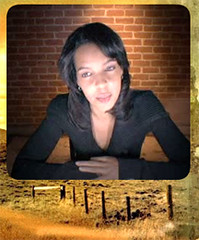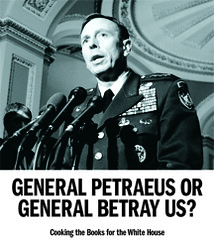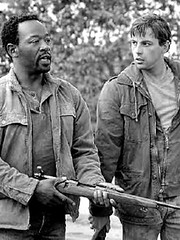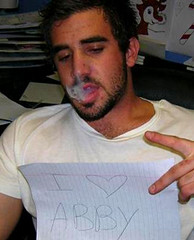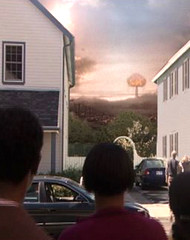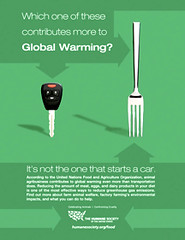I first heard about the dreaded black spot while reading Treasure Island by Robert Louis Stevenson. It’s a coming of age story about swashbuckling adventures, treasure maps, one-legged seamen with parrots, and the dreaded “Black Spot.”
Hey! That almost sounds like social media when I read Eric Eggerston’s beautifully summed take away of Paull Young’s post, entitled “Young PR’s - Know Your Place.”
“Don’t needlessly or carelessly piss all over someone who may be in a position to help or harm your career. Public relations, marketing … the people involved all know each other, talk to each other and compare notes about up-and-comers. They also throw business the way of people they think they can trust. Flame them at your peril,” says Eggerston, who writes one of my favorite blogs.
Arg! If you mess up, we’ll give you the Black Spot and, much like Billy Bones from Treasure Island, you will suffer a social media stroke and your blog will die.
To be certain, there is ample wisdom to be taken away from these posts despite my play on the idea that sometimes social media practitioners sound more like threatening pirates. It is true that if you launch a personal blog, you are making yourself semi-public, if not public. As such, you subject yourself to consequences. Random flames may carry with them some unintended penalties. And sometimes, even the most minor disagreements become the bane of the social media world — blogdramas.
So who knows, perhaps there is some logic in saying that, as Mitch Joel says, the soap opera aspect of social media “is hurting our industry and our ability to convince clients that these channels are excellent for their Marketing and Communications' needs (which it is).”
But at the same time, I don’t blame young professionals like Chris Clarke for mimicking the social media world created before he got here. On more than one occasion, I’ve read seasoned bloggers say “be bold or go home.” Be bold, they mean, but be bold against those who haven’t earned the eye patch. You know, I’m not defending the post, but Clarke was hardly the only one to target Joseph Jaffe.
Of the two posts, which is harsher? And of the two, which seems to have caused more outrage? To me, it seems that maybe Clarke is being singled out because he hasn’t earned his eye patch. Although I can’t call myself a fan, Amanda Chapel seems to have been given at least that much. And, as I have said before, Chapel and others exist because the public relations world seems to need them. It certainly embraces them. So who is to blame a younger professional for capitalizing on similar traffic spike generating content?
Before we get carried away, let me point out that this post isn’t about Jaffe or Chapel or Clarke. Everybody else can write about that.
What this post is about is an idea. And the idea is this: whereas name calling and blatant flame posts don’t lend anything to a discussion (though it happens to drive traffic and garner attention from what I’ve seen), neither does positioning social media into high school-like niches where the price of admission is blind acceptance of equally bold statements being put forth by “experts,” as defined by crazy measures like page rank.
As much as we don’t need a new generation of flamers, neither do we need a pirate-like society where select groups might dole out “Black Spots” to those they don’t like. The way I see it, social handshakes and eye patches might work in the short term, but most will unravel long term. The more exclusionary they become, the more likely they will be swallowed up by some greater group that develops around them.
So let’s not be so serious as to pretend social media is a new world when what it really is for businesses is a powerful communication tool (more about that on Wednesday). While my partner likens it to looking at the world through a magnifying glass — with egos sometimes growing to gigantic propositions — the same rules that apply to social media are the same ones that are always applied to communication: the bolder the statement, the more likely you are to receive attention.
The only difference is that it used to be journalists were the ones to knock down the bolder goofball ideas. Today, it can be anyone with a keyboard. So just like a public relations professional would not blacklist The New York Times, Clarke doesn’t need to be blacklisted either. He only needs to be proven wrong. So, Jaffe, prove him wrong. What can be easier than that?
Ho hum. Looking beyond the confines of this social media boat that seems to sail nowadays, I might point out that today’s collective practitioners face bigger challenges than young bloggers. And if we are being honest, I suspect some “experts” today will be distant memories in two years, eye patches and all.
“Har, har, look there captain! On the horizon... It’s an armada of advertising professionals to the east and a fleet of corporate communication professionals to the west. Darn, it looks as if their boats are bigger too.“

Hey! That almost sounds like social media when I read Eric Eggerston’s beautifully summed take away of Paull Young’s post, entitled “Young PR’s - Know Your Place.”
“Don’t needlessly or carelessly piss all over someone who may be in a position to help or harm your career. Public relations, marketing … the people involved all know each other, talk to each other and compare notes about up-and-comers. They also throw business the way of people they think they can trust. Flame them at your peril,” says Eggerston, who writes one of my favorite blogs.
Arg! If you mess up, we’ll give you the Black Spot and, much like Billy Bones from Treasure Island, you will suffer a social media stroke and your blog will die.
To be certain, there is ample wisdom to be taken away from these posts despite my play on the idea that sometimes social media practitioners sound more like threatening pirates. It is true that if you launch a personal blog, you are making yourself semi-public, if not public. As such, you subject yourself to consequences. Random flames may carry with them some unintended penalties. And sometimes, even the most minor disagreements become the bane of the social media world — blogdramas.
So who knows, perhaps there is some logic in saying that, as Mitch Joel says, the soap opera aspect of social media “is hurting our industry and our ability to convince clients that these channels are excellent for their Marketing and Communications' needs (which it is).”
But at the same time, I don’t blame young professionals like Chris Clarke for mimicking the social media world created before he got here. On more than one occasion, I’ve read seasoned bloggers say “be bold or go home.” Be bold, they mean, but be bold against those who haven’t earned the eye patch. You know, I’m not defending the post, but Clarke was hardly the only one to target Joseph Jaffe.
Of the two posts, which is harsher? And of the two, which seems to have caused more outrage? To me, it seems that maybe Clarke is being singled out because he hasn’t earned his eye patch. Although I can’t call myself a fan, Amanda Chapel seems to have been given at least that much. And, as I have said before, Chapel and others exist because the public relations world seems to need them. It certainly embraces them. So who is to blame a younger professional for capitalizing on similar traffic spike generating content?
Before we get carried away, let me point out that this post isn’t about Jaffe or Chapel or Clarke. Everybody else can write about that.
What this post is about is an idea. And the idea is this: whereas name calling and blatant flame posts don’t lend anything to a discussion (though it happens to drive traffic and garner attention from what I’ve seen), neither does positioning social media into high school-like niches where the price of admission is blind acceptance of equally bold statements being put forth by “experts,” as defined by crazy measures like page rank.
As much as we don’t need a new generation of flamers, neither do we need a pirate-like society where select groups might dole out “Black Spots” to those they don’t like. The way I see it, social handshakes and eye patches might work in the short term, but most will unravel long term. The more exclusionary they become, the more likely they will be swallowed up by some greater group that develops around them.
So let’s not be so serious as to pretend social media is a new world when what it really is for businesses is a powerful communication tool (more about that on Wednesday). While my partner likens it to looking at the world through a magnifying glass — with egos sometimes growing to gigantic propositions — the same rules that apply to social media are the same ones that are always applied to communication: the bolder the statement, the more likely you are to receive attention.
The only difference is that it used to be journalists were the ones to knock down the bolder goofball ideas. Today, it can be anyone with a keyboard. So just like a public relations professional would not blacklist The New York Times, Clarke doesn’t need to be blacklisted either. He only needs to be proven wrong. So, Jaffe, prove him wrong. What can be easier than that?
Ho hum. Looking beyond the confines of this social media boat that seems to sail nowadays, I might point out that today’s collective practitioners face bigger challenges than young bloggers. And if we are being honest, I suspect some “experts” today will be distant memories in two years, eye patches and all.
“Har, har, look there captain! On the horizon... It’s an armada of advertising professionals to the east and a fleet of corporate communication professionals to the west. Darn, it looks as if their boats are bigger too.“








